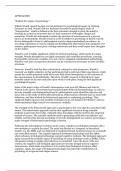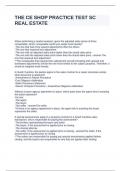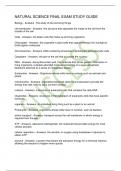APPROACHES
“Explain the origins of psychology.”
Willem Wundt opened the first ever lab dedicated to psychological inquiry in Leizberg,
Germany, in 1879. Wundt’s lab was dedicated towards the psychological study of
“Introspection,” which is defined as the first systematic attempt to study the mind by
breaking up conscious awareness into it’s basic structures of thoughts, images and
sensations. Wundt also attempted to isolate the structure of consciousness in a process
known as structuralism. Wundt is known as the forefather of psychology in that he was the
first to distinguish it from it’s philosophical roots by using standardised procedures- by
recording experiences to various stimuli and dividing their observations into categories. For
instance, participants were given a ticking metronome and they would report their thoughts
on the matter.
Wundt’s work is highly significant within the field of psychology, which marks it’s major
strength. Wundt attempted to use highly systematic and controlled procedures, ensuring
that possible extraneous variables were not a factor, alongside standardised methodology.
Wundt’s work into introspection therefore can be considered a forerunner to later scientific
processes.
However, Wundt’s work has been exhaustively critiqued as time progresses. Wundt’s
research was highly subjective in that participants had to self-report their experiences, which
means the results generated could tell us very little about introspection or the structure of
the consciousness in all individuals. Therefore, Wundt’s research is limited by it’s poor
scientific nature to the time and place upon which it took place, being the first significant
psychological inquiry.
Some of the major critics of Wundt’s introspective work were B.F Skinner and John B.
Watson in the 1900s. These behaviourist psychologists believed that psychology, in order to
be truly scientific and distinguished from it’s philosophical roots, should be objective and
focus only on the study of observable phenomena. Behaviourists collected data on observable
behaviour, and thus birthed the behavioural approach to explaining psychology. They
employed highly rigorous and scientific techniques to do, for instance B.F Skinner’s rat box,
which maintained high control over extraneous variables.
The strength of the behaviourist approach in psychology is this very objective and observable
nature. The behaviourist approach was the first significant success at using scientific
methods to generate observable, replicable data, that aligns with the modern-day empirical
method of science. The scientific methods used in generating valid data was objective and
reliable, and thus this allowed psychology to become distinguished as a science, presenting a
major strength of behaviourist psychology in history.
Following the technological revolution in the 1950s, cognitive psychologists emerged with a
new metaphor to explain the mind. The mind was likened to a computer in theoretical
models, e.g, the MSM, and was dedicated to studying internal mental processes in a scientific
and controlled manner. The cognitive approach dominated psychology until the 1980s,
where advances in biological technology usurped cognitive methods. The biological approach
again increased the scientific rigour of psychology by using techniques such as fMRIs, EEGs,
and genetic testing to explain why behaviour is committed. Upon the dawn of the 21st
century, the cognitive and biological approach have become merged to form cognitive
neuroscience, which looks towards how it is exactly these biological structures affect
cognition. Again, the usage of biological technologies has aided the establishment of
psychology as a rigorous and unique science.
,The use of such scientific methods in psychology in the modern era provides itself as a major
strength. Psychology is able to employ the technology of biology in such a way to it’s
advantage in explaining behaviour, which means that the overall scientific credibility of
psychology is increased. The usage of brain scans and genetic technology allows psychology
to distinguish itself as a scientific discipline.
However, a limitation of psychology as a science may be dependent on the very matter of
subject which it studies. Human beings are not passive within research- they are susceptible
to bias and demand characteristics, being active agents int research. Further, psychology is
unique in that it lacks a common paradigm of beliefs that defines a science, with a variation
of approaches explaining behaviour in different ways, ranging from scientific to unscientific.
Therefore, a scientific approach towards the study of human thought may not always be
possible.
, “Outline and evaluate the behaviourist approach.”
The behaviourist approach makes the key assumption that all psychological phenomena
which is studied should be observable and replicable. The behaviourist approach explains an
infant to be a “blank slate,” upon which time and experience will shape and determine how
the infant will later behave. All behaviour, therefore, is explained to be a result of experience
and learning. The behaviourist approach explains these learning processes occur in two main
streams- the first of which is known as classical conditioning.
Classical conditioning is known to be learning through association. Classical conditioning
occurs when an unconditioned stimulus that provokes an unconditioned response becomes
associated with a neutral stimulus, that leads to the development of a conditioned response
towards the conditioned stimulus. Ian Pavlov, a behaviourist psychologist, was the first to
demonstrate this in demonstrating he was able to classically condition dogs to salivate at the
sound of a bell. The bell was continually presented with food, and over time the dogs were
able to associate these two stimuli together.
UNCONDITONED STIMULUS (food ) → UNCONDITIONED RESPONSE (salvation)
UNCONDITIONED STIMULUS(food) + NEUTRAL STIMULUS (bell) → UNCONDITIONED
RESPONSE (salvation)
CONDITIONED STIMULUS (bell) → CONDITIONED RESPONSE (salvation.)
The process of classical conditioning has been applied to understanding how phobias can be
acquired. For instance, a loud noise may provoke an unconditioned fear response, which can
be associated with a neutral stimulus that is presented at the same time e.g, fireworks.
The alternate way of learning occurs via operant conditioning, which is known as learning
through consequences. B.F Skinner suggested that learning is an active process, whereby
humans and animals operate on their environment. Positive reinforcement is where a certain
behaviour provokes a positive reward, that creates feelings of happiness and is therefore
more likely to be replicated. In contrast, punishment is where a behaviour evokes a negative
consequence, which creates feelings of upset and decreases the likelihood that a behaviour
will be replicated. The final type of reinforcement is negative reinforcement, wherein
avoiding a stimulus or behaviour that will create negative feelings will, in turn, create
feelings of pleasure. This can be applied to explaining avoidance behaviour in phobias. B.F
Skinner demonstrated the process of operant conditioning in a famous study known as
Skinner’s Rat Box. Skinner demonstrated that rats could learn to press a lever if this lead to
food being provided- positive reinforcement. Similarly, they could learn to press the lever to
prevent an electric shock from passing through the box- negative reinforcement.
An advantage of the behaviourist approach is that it relies on highly controlled, laboratory
research upon which it draws conclusions about behaviour. Skinner’s rat box is a key
example of this- all extraneous and confounding variables are eliminated, allowing for
establishment of stimulus and response behaviour and resulting causation. This suggests
that the behaviourist conclusions about how and why behaviour occurs is based on credible,
scientific evidence.
A further advantage of the behaviourist approach is that the principles of conditioning have
been applied to real-world behaviours and problems. For instance, operant conditioning
forms the basis of token economies in institutions, such as prisons or psychiatric wards, that
positively reinforce good behaviour and vice versa, allowing for rehabilitation. As discussed,
classical conditioning and operant conditioning have been applied to explain and thus treat
phobias, such as SD + flooding. Therefore, the behaviourist approach maintains extremely
high internal validity and has high value.






